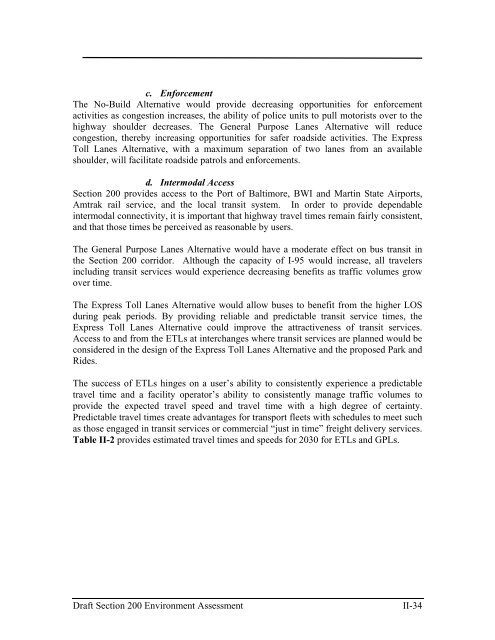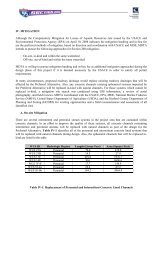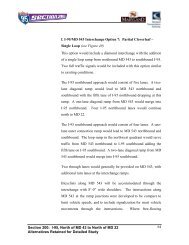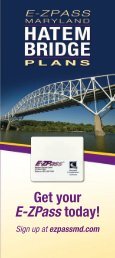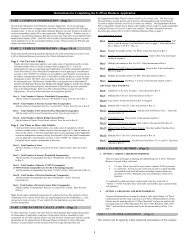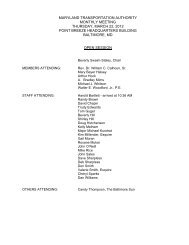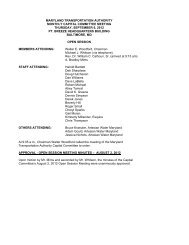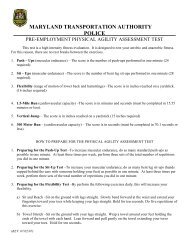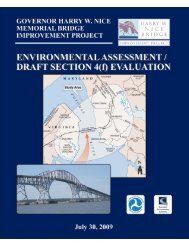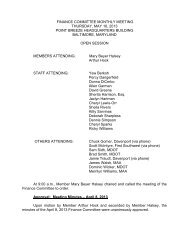Environmental Assessment - MdTA
Environmental Assessment - MdTA
Environmental Assessment - MdTA
You also want an ePaper? Increase the reach of your titles
YUMPU automatically turns print PDFs into web optimized ePapers that Google loves.
c. Enforcement<br />
The No-Build Alternative would provide decreasing opportunities for enforcement<br />
activities as congestion increases, the ability of police units to pull motorists over to the<br />
highway shoulder decreases. The General Purpose Lanes Alternative will reduce<br />
congestion, thereby increasing opportunities for safer roadside activities. The Express<br />
Toll Lanes Alternative, with a maximum separation of two lanes from an available<br />
shoulder, will facilitate roadside patrols and enforcements.<br />
d. Intermodal Access<br />
Section 200 provides access to the Port of Baltimore, BWI and Martin State Airports,<br />
Amtrak rail service, and the local transit system. In order to provide dependable<br />
intermodal connectivity, it is important that highway travel times remain fairly consistent,<br />
and that those times be perceived as reasonable by users.<br />
The General Purpose Lanes Alternative would have a moderate effect on bus transit in<br />
the Section 200 corridor. Although the capacity of I-95 would increase, all travelers<br />
including transit services would experience decreasing benefits as traffic volumes grow<br />
over time.<br />
The Express Toll Lanes Alternative would allow buses to benefit from the higher LOS<br />
during peak periods. By providing reliable and predictable transit service times, the<br />
Express Toll Lanes Alternative could improve the attractiveness of transit services.<br />
Access to and from the ETLs at interchanges where transit services are planned would be<br />
considered in the design of the Express Toll Lanes Alternative and the proposed Park and<br />
Rides.<br />
The success of ETLs hinges on a user’s ability to consistently experience a predictable<br />
travel time and a facility operator’s ability to consistently manage traffic volumes to<br />
provide the expected travel speed and travel time with a high degree of certainty.<br />
Predictable travel times create advantages for transport fleets with schedules to meet such<br />
as those engaged in transit services or commercial “just in time” freight delivery services.<br />
Table II-2 provides estimated travel times and speeds for 2030 for ETLs and GPLs.<br />
Draft Section 200 Environment <strong>Assessment</strong><br />
II-34


